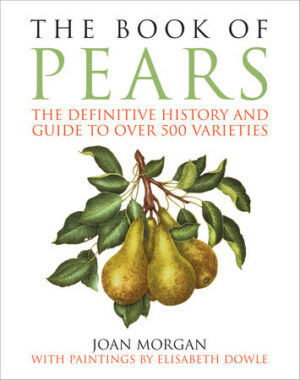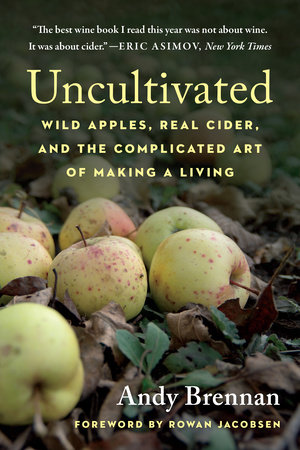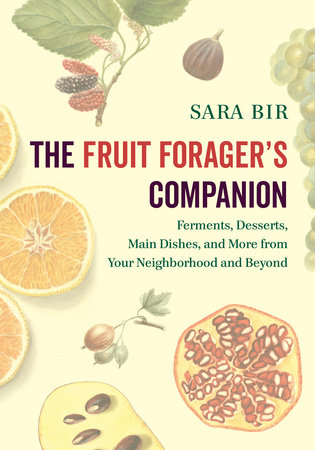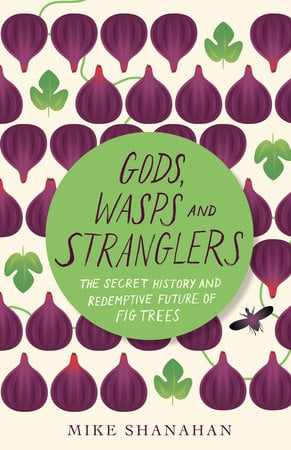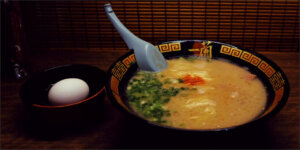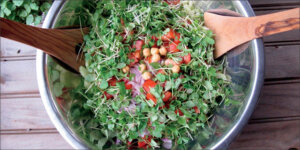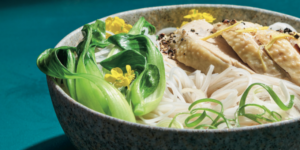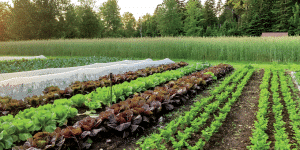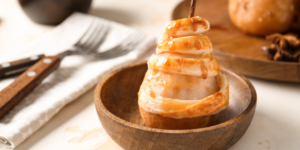A Book for the Fruit Nerd on Your Holiday Gift List
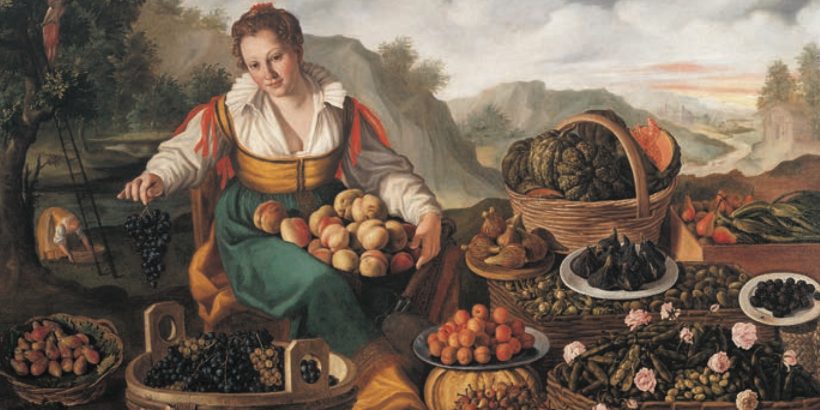
Have a fruit nerd on your holiday shopping list this year? Then give the gift that Booklist calls, “a thorough investigation of one wonderful fruit”—The Book of Pears by Joan Morgan.
In this one-of-a-kind guide, noted pomologist and fruit historian Joan Morgan (The Book of Apples) has researched and crafted a definitive account of the pear’s history and uses, from fresh eating to cooking and baking to making perry, the delicate and sophisticated pear equivalent of cider.
Featuring a directory of 500 varieties of both ancient and modern pears with tasting notes and descriptions for every one, The Book of Pears reveals the secrets of the pear as a status symbol, introduces readers to some of the most celebrated fruit growers in history, and explains how the pear came to be so important as an international commodity. This unique and fascinating book will prove indispensable for historians, horticulturists, and all fruit lovers.
For a sneak peek, read the first part of chapter one below, which has been adapted for the web.
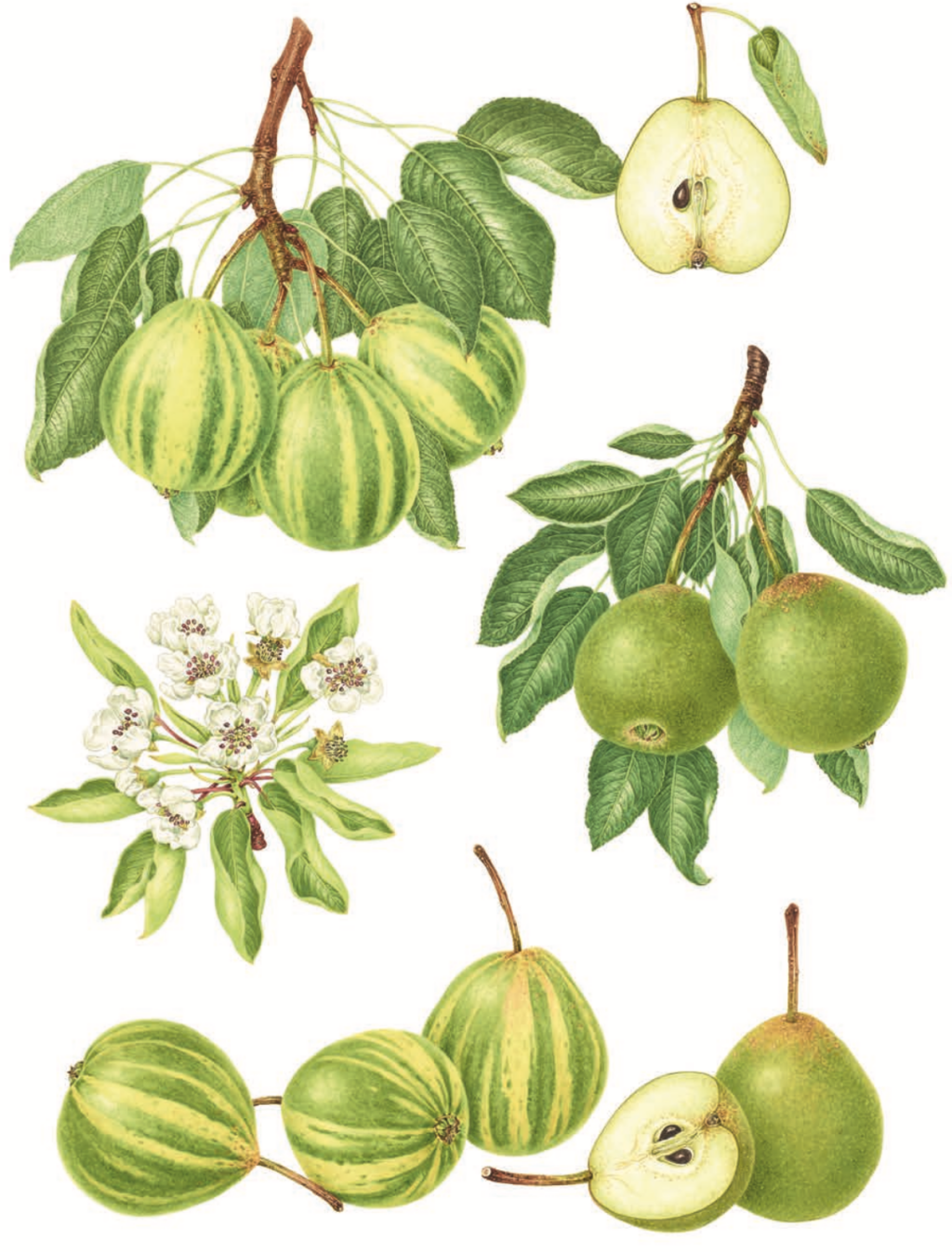
Watercolor Illustration by Elisabeth Dowle
A Gift for the Fruit Nerd: The Book of Pears
Pears, at their most perfect, are sweet, juicy and perfumed. Their ‘buttery’ flesh, which melts in your mouth like butter, glistens with juice; it can be sugary yet lemony, and scented with fragrances reminiscent of rosewater, musk, vanilla and other aromatics. Pears are potentially the most exciting of all the tree fruits. Cherries, glossy and succulent, and honeyed gage plums are wonderful in their time; apples will display a gloriously varied array of favours from summer to the following spring; but the pear can be so much more exceptional in its luscious textures, boudoir perfumes and richness of taste. Gold to the apple’s silver, it used to be said.
The number of fine pears with the most prized buttery texture increased tenfold or maybe nearer twentyfold during the nineteenth century, pushing aside all the other older pears. Previously, pears for fresh eating were broadly of two sorts: those that softened on keeping to become juicy and melting in texture, with some possessing the sought-after buttery quality, and the less refined, firmer-fleshed pears. These latter pears were called cassante (breaking) in France, as they broke in the mouth, and they could be quite sweet and sometimes perfumed, like the best pears. The avalanche of numerous new, finely textured pears served not only to eclipse all the lesser sorts, but also to overshadow the pear’s role as a cooked fruit. This was the fate of the toughest, sharpest pears, which came to be called baking pears. Cooking or baking pears are not really edible as fresh fruit; they remain firm and tough-fleshed no matter how long they are kept, and some stay sound almost until the pear season comes around again. These pears are very sharp and astringent, yet with an attractive taste when cooked. Baking pears are barely known at all now in Britain, although still appreciated on the Continent where, in addition to being served as poached sweet fruit, they are eaten cooked with meats and turned into pickles and chutneys. There is a further group of pears – the perry pear – used for making perry, the pear equivalent of cider. This traditional drink is presently undergoing a great revival in its fortunes and valued especially in England and France, also in Germany, Austria and Switzerland. Perry pears are small, coarse-fleshed and often fiercely astringent, but capable of being transformed into a drink that sparkles in the glass like champagne.
These different categories of pears were apparent by the seventeenth century, when the finest were eaten fresh along with some of the best cassante pears, perhaps with sugar sprinkled over. Baking pears went to the kitchen to be turned into sweet compotes, and perry pears made a drink to rival the best wine, its producers claimed. It was also in the seventeenth century that the European pear became much more widely distributed (the pear is not a native fruit of North America or the southern hemisphere). English and French settlers took the pear to East Coast America and Canada. Probably, the Spanish took pears to South America. Dutch traders introduced pears to South Africa, and British explorers took pears to Australia and New Zealand in the late eighteenth and early nineteenth centuries. In these countries, as in Europe, the pear became a garden, orchard and market fruit, and also an export fruit shipped around the globe. With vast acres of new land opened up by the end of the nineteenth century and some of the finest varieties available, pear trees, like apples and many other fruits, were planted on a massive scale to found the present international fruit industry of which European production is also a part.
In Britain, we receive imports of fresh eating pears from all over the world, but see only a small number of varieties on sale nowadays.
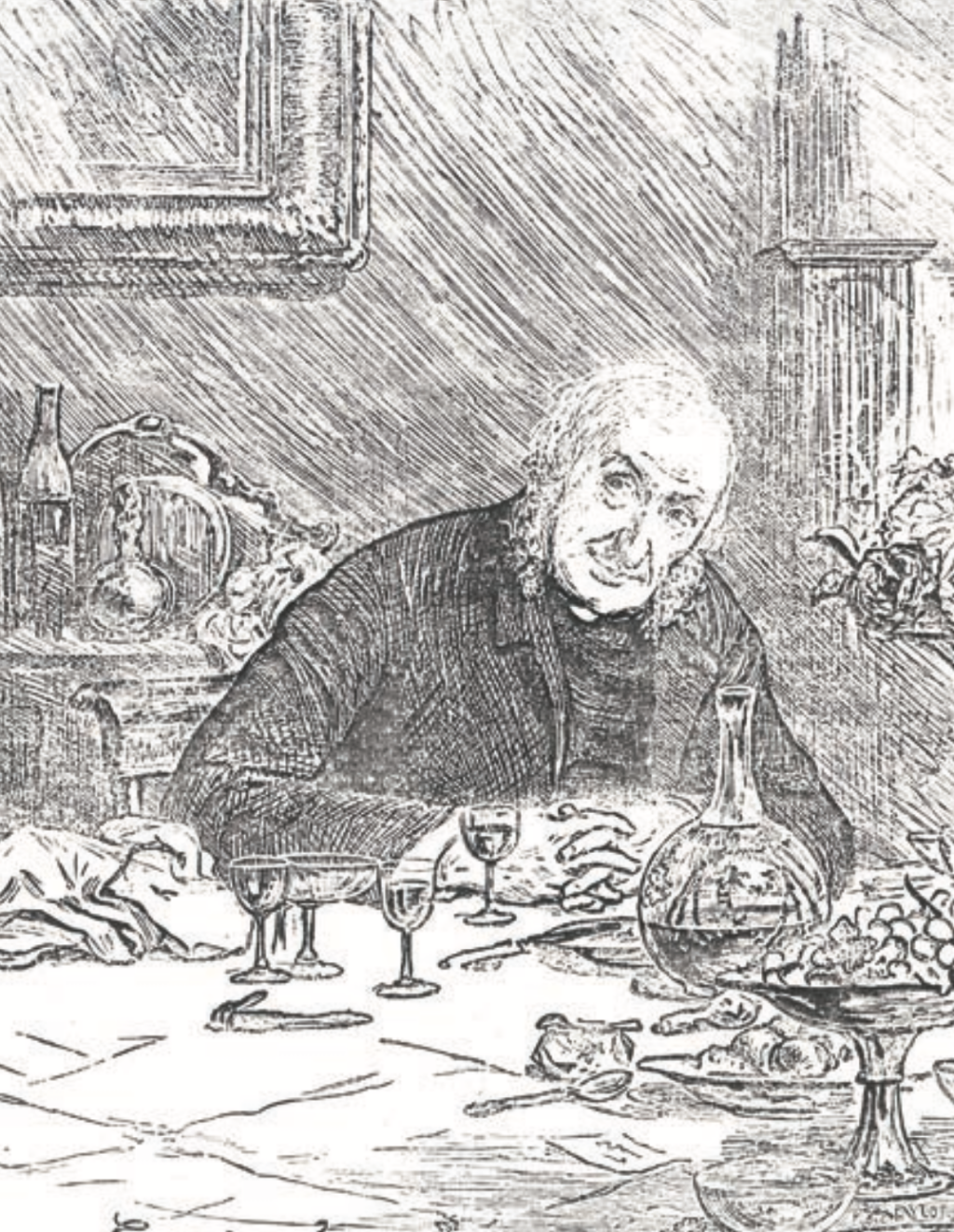
Some fine fruit and a glass of Madeira wine to complete the meal.
These are the half dozen or so widely grown varieties and only a tiny fraction of the hundreds of varieties that exist, giving us a mere glimpse of the pear’s range. Shapes, sizes and colours vary from pyriform (typically pear-shaped) to conical and even round, from very small to enormous, weighing over 1 kg (2 lb). The colours can be pale primrose to golden, often pink, scarlet or terracotta flushed and freckled, or covered in cinnamon russet. Not only does the pear’s appearance vary considerably, but also its eating qualities. The first summer pears eaten straight from the tree are juicy and refreshing. Then the season progresses to the finer textures and more complex favours of autumn and winter varieties that, after picking, need keeping in a cool dark place to mature. Picked fruit, whether a pear or apple, is still living, breathing and metabolising, refining its texture, converting starch to sugar and synthesising the aromatics that enrich its taste. A pear, however, can be a fickle creature. The best-behaved pears signalled their readiness to eat, it was said. Their colours mellowed and, when gently pressed around the stalk, gave just a little. Some were not so co-operative and developed a ‘sleepy’ centre with no exterior indication that they were approaching their prime time. At the height of the pear’s appreciation in the nineteenth and early twentieth centuries, enthusiasts were said to stay up all night to catch the peak of their carefully stored specimens. An exaggeration perhaps, but while this seemingly unpredictable tendency to go over did not enhance the pear’s reputation, it served in some respects to add to the fruit’s fascination by giving it an air of mystery.
Pears in their season, and successions of different varieties and different qualities ready to eat at a particular time of the year, may be a lost notion in today’s international markets, but there is a tremendous diversity of pears.
The first summer pears ripen in England during July, and a month earlier in warmer climates. These are followed by more varieties ripening during August, others for early September, a further selection towards the end of the month, and so on through the autumn and winter and into the New Year, even to the spring. Each one with its own taste and favour, let alone shape and colour. In general, you find the finest textures and the most intense favours and perfumes in the varieties ripening during the autumn and up to Christmas, with some grand pears still maturing in January and February. The names alone give an idea of their qualities, the esteem they attracted, where they originated and the people who raised them, or they honoured: from Early Market, Pero Nobile, Beurré Superfn and Pitmaston Duchess to Eldorado, Fragrante, Vermont Beauty, Triomphe de Jodoigne and Joséphine de Malines.
In this brief introduction to the pear we are talking about the European or Western pear, the pear of our gardens, orchards and supermarkets, but there is another sort – the Asian pear of China, Japan and Korea – to which we will return later.
Recommended Reads
Recent Articles
Miso soup is the perfect, soul-healing meal. Not only does this soup taste great, it also has amazing health benefits!
Read MoreDoes the cold weather have you dreaming about fresh greens and colorful salad? Grow and harvest sprouts indoors to make those dreams a reality!
Read MoreWinter just got cozier! Our simple & nourishing soup is just what you need to cozy up on chilly days or nights! Delicious and nutritious, this soup is perfect for the whole family.
Read MoreIndulge in the sweet aroma of these pastry-wrapped pears! Easy to make and stunning to serve, these pastry-wrapped pears are a game-changer.
Read More

